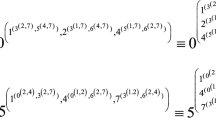Abstract
Originally the Latency Insensitive Protocols (LIP) were invented to make a system elastic to the interconnect latencies using handshaking signals such as ‘valid’ and ‘stall’. Such protocols require extra signals leading to area overhead and may affect throughput of the system. To optimize away some of these overheads, scheduled LIPs were proposed which replaced the complex handshake control blocks by a central scheduling scheme. One can view a scheduled LIP based design as a system where within each strongly connected component of the system, the modules and the relay stations are scheduled by activation signals. These activation signals can be thought of as infinite sequence of ‘1’s and ‘0’s. If such sequences are periodic, one can view them as periodic clocks. Given the advances in periodic clock calculus in the synchronous programming context, in this paper, we analyze the LIP scheduling problem within the framework of periodic clock calculus. Such analysis provides straight forward algorithms to compute the throughput of scheduled LIP based systems. Within this framework, we also propose a method to synthesize fractional synchronizers. Fractional synchronizers are used to equalize cycles with different throughputs. Our method can determine the numbers and the scheduling sequences of such fractional synchronizers using the periodic clock calculus. In addition, we provide a static estimation of the required fractional synchronizers based only on the system’s structure which is fast and accurate.










Similar content being viewed by others
References
Baccelli F, Cohen G, Olsder GJ, Quadrat J-P (1992) Synchronization and linearity: an algebra for discrete event systems. Wiley, New York
Boucaron J, de Simone R, Millo J-V (2007) Formal methods for scheduling of latency-insensitive designs. EURASIP Embedded J Syst 2007(1):8–8
Boucaron J, de Simone R, Millo J-V (2006) Latency-insensitive design and central repetitive scheduling. Formal methods and models for co-design, 2006. MEMOCODE ’06. Proceedings fourth ACM and IEEE international conference on July 2006, pp 175–183
Boyer FR, Aboulhamid EM, Savaria Y, Boyer M (1998) Optimal design of synchronous circuits using software pipelining techniques. ACM Transact Des Automat Electron Syst 7:516–532
Carloni LP (2006) The role of back-pressure in implementing latency-insensitive systems. Electr Notes Theor Comput Sci 146(2):61–80
Carloni L, McMillan K, Sangiovanni-Vincentelli A (1991) Theory of latency-insensitive design. IEEE Trans Comput-aided Des Integr Circuits Syst 79(9):1305–1320
Casu MR, Macchiarulo L (2004) A new approach to latency insensitive design. In: DAC ’04: proceedings of the 41st annual conference on design automation. ACM, New York, pp 576–581
Cohen A, Duranton M, Eisenbeis C, Pagetti C, Plateau F, Pouzet M (2005) Synchronization of periodic clocks. In: In ACM conf. on embedded software (EMSOFT05)
Cohen A, Duranton M, Eisenbeis C, Pagetti C (2006) N-Synchronous Kahn networks - a relaxed model of synchrony for real-time systems. In: ACM international conference on principles of programming languages (POPL06). ACM Press, pp 180–193
Cohen A, Mandel L, Plateau F, Pouzet M (2008) Abstraction of clocks in synchronous data-flow systems. In: APLAS ’08: proceedings of the 6th asian symposium on programming languages and systems. Springer, Berlin, pp 237–254
Govindarajan R, Gao GR (1993) A novel framework for multi-rate scheduling in dsp applications. Proceedings., International Conference on Application Specific Array Processors, Venice, Italy, 25–27 Oct 1993. pp 77–88
Halbwachs N, Caspi P, Raymond P, Pilaud D. The synchronous data-flow programming language LUSTRE. Proc IEEE 79(9):1305–1320
Lawvere E (1976) Combinatorial optimization: networks and matroids. Holt Rinehart and Winston, New York
Murata T (1989) Petri nets: properties, analysis and applications. Proc IEEE 77(4):541–580
Xue B, Shukla SK (2009) Analysis of scheduled latency insensitive systems with periodic clock calculus. In: IEEE high level design validation and test workshop (HLDVT09), San Francisco
You J, Xu Y, Han H, Stevens KS (2008) Performance evaluation of elastic gals interfaces and network fabric. Electron. Notes Theor Comput Sci 200(1):17–32
Author information
Authors and Affiliations
Corresponding author
Additional information
Responsible Editor: P. Mishra
This work was partially supported by NSF grant CCF-0830882 and SRC task 1818.
Rights and permissions
About this article
Cite this article
Xue, B., Shukla, S.K. Analysis of Scheduled Latency Insensitive Systems with Periodic Clock Calculus. J Electron Test 26, 227–242 (2010). https://doi.org/10.1007/s10836-010-5145-z
Received:
Accepted:
Published:
Issue Date:
DOI: https://doi.org/10.1007/s10836-010-5145-z




